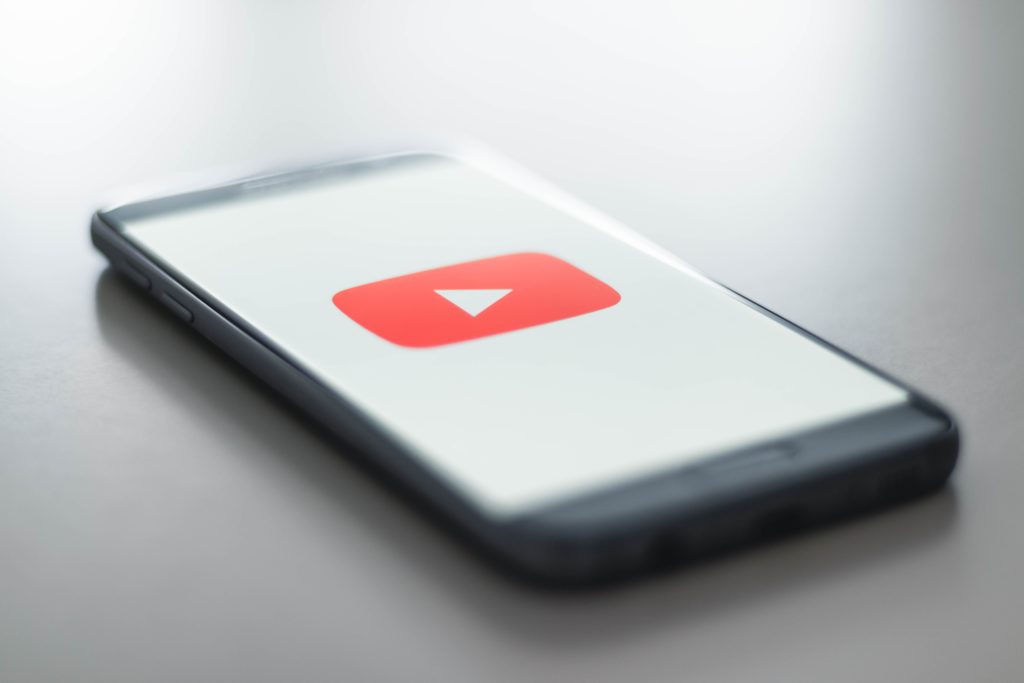


In the digital age, YouTube has emerged as a lucrative platform, enabling creators to generate significant revenue streams. This article discusses various aspects surrounding YouTube payments and strategies to optimize your earnings as a creator. From understanding when YouTube pays you to channel monetization, let’s delve deeper into the intricate web of YouTube earnings.
YouTube payments primarily depend on the advertising revenue generated from YouTube ads displayed on your videos. Generally, YouTube pays creators a share of the ad revenue generated from their youtube videos. The actual amount can vary based on several factors including the type of ads displayed, the viewer’s location, and more. Additionally, creators can earn through affiliate marketing, channel memberships, and YouTube Premium subscribers.

To start earning money on YouTube, creators need to join the YouTube Partner Program (YPP). This requires meeting specific criteria including having at least 1,000 subscribers and 4,000 valid public watch hours over the last 12 months.
Once you meet these requirements, you can apply to the program. After approval, you can link your Google AdSense account to your YouTube channel, which enables you to receive YouTube payments once you reach the payment threshold of $100.

In the bustling world of YouTube, content creators are constantly seeking avenues for making money and maximizing their YouTube income. The journey from creating videos to becoming one of the top YouTube earners is paved with strategic monetization and understanding the nuances of the YouTube algorithm. Here, we explore how and when YouTube pays its creators through various revenue streams.
One of the primary ways many YouTubers make money is through video ads. YouTube’s payment cycle for ad view earnings is monthly, typically disbursing funds around the 21st of each month through Google AdSense.
However, how much YouTubers earn depends significantly on factors like video views, video length, and the quality of video content. Eligible creators in the YouTube Partner Program can analyze their earnings in YouTube Studio, which provides insights into their AdSense revenue generated from both shorter and longer videos.
Affiliate marketing has emerged as a significant revenue stream for YouTube creators. By adding affiliate links to their video descriptions, creators can earn a commission for every sale made through those links. The earning money timeline in affiliate marketing varies, usually depending on the specific terms of the affiliate program, which might offer monthly or bi-monthly payouts.
The #1 to make money online with TikTok Search (FREE TRAINING)

YouTube memberships offer a way for creators to foster a loyal audience by providing exclusive content and perks for a monthly fee. Additionally, Super Chat serves as a fan funding method, allowing viewers to pay to highlight their messages during live chats. YouTube processes the payments for memberships and Super Chat through Google AdSense, adding it to the creators’ monthly YouTube income.
Successful YouTubers often launch their own line of branded merchandise, selling it directly through YouTube’s merchandise shelf. The merchandise sales revenue is generally processed through the respective partner platform, with payment frequencies varying.
Moreover, creators can offer online courses or engage in influencer marketing, collaborating with brands to reach a target audience, thus creating content that generates more money.

YouTube earnings per 1,000 views, commonly referred to as CPM (Cost per Mille), can vary significantly between youtube channels. Generally, creators can expect to make between $3 and $5 per thousand views, although this can fluctuate based on various factors such as the niche, audience demographic, and the type of YouTube ads displayed.
In the digital age, YouTube has emerged as a powerful platform for advertisers to reach a diverse and expansive audience. YouTube offers a range of ad formats to help businesses connect with their target audience in the most effective way. In this article, we delve deeper into the various types of YouTube ads that advertisers can leverage to maximize their reach and engagement.
Display ads are a type of advertisement that appears on the right-hand side of the video that a user is watching. These ads are visible on desktop platforms and are strategically placed to catch the viewer’s attention without interrupting the video playback.
Display ads can be an excellent choice for advertisers looking to increase brand awareness, as they offer a visual and dynamic way to promote products or services. Moreover, these ads can be customized with compelling visuals and text to encourage users to click through to learn more or make a purchase.
Overlay ads are semi-transparent advertisements that are displayed at the bottom of a video, occupying approximately 20% of the video screen. These ads are typically visible on desktop platforms and offer a less intrusive way to reach viewers as they watch their favorite content.
Overlay ads can contain text or images and provide an opportunity for advertisers to share special offers, promotions, or more information about their brand. The semi-transparent nature of these ads allows viewers to still engage with the video content while having the option to interact with the ad if it piques their interest.
Skippable video ads are a popular ad format on YouTube, offering a win-win situation for both advertisers and viewers. These ads play before, during, or after a video, and viewers have the option to skip the ad after 5 seconds if they wish to proceed to the video content.
For advertisers, this means that they only pay when viewers choose to engage with the ad, either by watching it for a certain duration or interacting with it. Skippable video ads allow advertisers to create compelling and immersive video content to captivate viewers, with the added benefit of not forcing viewers to watch the ad, thus fostering a more positive user experience.
Non-skippable video ads are a type of advertisement that viewers must watch in its entirety before they can view the main video content. These ads can last up to 15-20 seconds, providing advertisers with a guaranteed opportunity to convey their message to the audience.
Since viewers cannot skip these ads, it’s crucial for advertisers to create engaging and relevant content to hold the viewer’s attention. Non-skippable video ads can be a powerful tool for building brand awareness and conveying more detailed information about a product or service.
Understanding the different types of YouTube ads can help creators maximize their advertising revenue.

Creators can utilize multiple strategies to make money on YouTube, including channel monetization through advertising revenue, affiliate marketing, offering products and courses, and leveraging YouTube memberships and YouTube Premium features. It’s essential to adapt your content to fit YouTube’s guidelines, ensuring a steady stream of YouTube pay.
Online teachers, like those using the Teach.io platform, can harness the power of YouTube, a platform teeming with eager learners, to advertise their online courses effectively. By creating high-quality content that offers a glimpse into the course material, teachers can attract a target audience interested in the subject matter. Utilizing YouTube’s video descriptions allows them to share links directly to their online course landing pages, facilitating easy enrollment.
Moreover, teachers can engage with their audience through YouTube’s community features, fostering a loyal following that is more likely to enroll and recommend the course to others. Collaborating with influential YouTubers for shoutouts or reviews can further amplify the course’s visibility, potentially leading to higher enrollment rates and a successful online teaching venture.
To maintain a successful YouTube channel that complies with YouTube’s policies and guidelines, creators should ensure their content does not contain copyrighted material or offensive content. Adhering to these guidelines helps in sustaining and potentially increasing YouTube payments over time.
Affiliate marketing is a popular method to make money on YouTube. Creators can promote products or services in their youtube videos and earn a commission for each sale made through their unique affiliate link.
Channel monetization involves using various methods to generate revenue through your YouTube channel. This includes making money from YouTube ads, selling products or merchandise, offering courses, and leveraging YouTube Premium features and channel memberships.
The #1 to make money online with TikTok Search (FREE TRAINING)

Creators can develop and sell products or courses to their audience. These can be promoted through youtube videos, helping to boost overall youtube earnings.
YouTube Premium subscribers pay a monthly fee for an ad-free viewing experience. Creators earn a share of the YouTube Premium revenue based on how much their content is watched by YouTube Premium subscribers.
YouTube memberships allow creators to offer exclusive content and perks to subscribers for a monthly fee. This is another effective way to boost YouTube pay.
Selling products or merchandise is a viable option for creators looking to diversify their income streams. You can promote your merchandise directly through your YouTube channel.
Several factors influence YouTube pay per view earnings, including:
Understanding these factors can help creators optimize their YouTube channels for better earnings.

Q1: How many subscribers do I need to start earning money on YouTube?
Q2: What are some other ways to earn money on YouTube apart from video ads?
Q3: Can I launch my own line of products as a new YouTuber?
Q4: How can I increase my video views on YouTube?
Q5: Is it possible to make a living by creating videos on YouTube?

In the dynamic landscape of YouTube, creators have the potential to become the richest YouTuber by leveraging multiple revenue streams and maintaining an engaged audience. From video ads to selling their own merchandise, the opportunities for earning are vast.
However, it’s crucial for creators to adhere to YouTube’s policies, avoiding inappropriate content to maintain a positive relationship with both their audience and the platform.
As creators aspire to join the ranks of the highest paid YouTubers, understanding the payment dynamics and optimizing content for the YouTube algorithm can pave the way to significant earnings. Whether you are an average YouTuber or aiming to be the highest paid YouTuber, keeping abreast with the insights from platforms like Influencer Marketing Hub can guide you in making informed decisions and scaling your subscriber count effectively.





